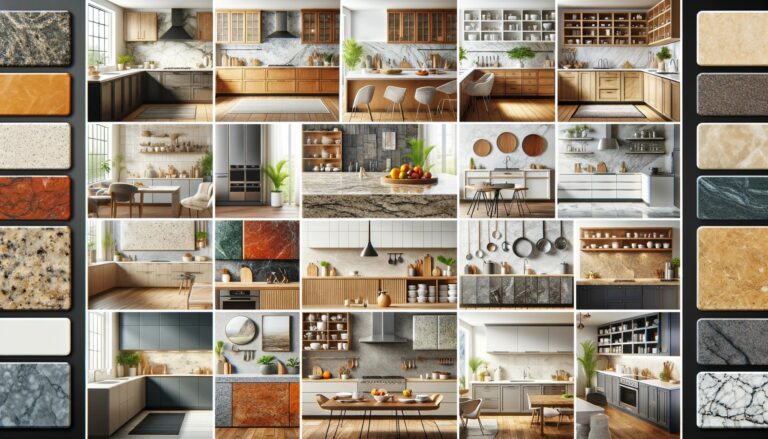The kitchen is often referred to as the heart of the home, and it’s also one of the areas that can have the greatest impact on your property’s resale value. Whether you’re considering selling your home soon or simply want to invest in updates that pay off in the long run, here are some effective kitchen improvements that can significantly increase your home’s value.
1. Modernize Your Kitchen Cabinets
Refacing Cabinets
If your kitchen cabinets are structurally sound but outdated, refacing them can be a cost-effective way to transform their appearance without the expense and disruption of a full replacement. This involves replacing the cabinet doors and drawer fronts and applying a new veneer to the cabinet boxes.
Adding New Hardware
Replacing old, worn-out hardware (like handles and knobs) with modern fixtures can quickly update the look of your kitchen. Choose styles that complement the overall design aesthetic of your space.
2. Upgrade Appliances to Energy-Efficient Models
Stainless Steel Appliances
Investing in new, energy-efficient appliances not only adds aesthetic appeal with a more modern look but also appeals to homebuyers who value sustainability and savings in utility costs. Stainless steel remains a popular choice for its sleek look and durability.
Smart Kitchen Appliances
Smart appliances offer features like energy monitoring and automated cooking settings, which can be a major selling point for tech-savvy buyers and those looking for modern conveniences.
3. Install High-Quality Countertops
Quartz and Granite
Installing high-quality materials such as quartz or granite countertops can significantly enhance the look and functionality of your kitchen. These materials are highly durable and resistant to scratches and heat, appealing to buyers looking for quality and low maintenance.
Butcher Block
For a warmer, more rustic kitchen aesthetic, consider butcher block countertops. They’re durable and can be sanded and resealed as needed, providing a long-lasting and attractive work surface.
4. Improve Kitchen Lighting
Under-Cabinet Lighting
Installing under-cabinet lighting can enhance the functionality and ambiance of your kitchen. This type of lighting adds a subtle yet effective brightness to workspaces, making them more usable and appealing.
Pendant Lighting
Pendant lights over the kitchen island or dining area can serve as both a functional light source and a decorative element, enhancing the overall design of the room.
5. Update the Backsplash
Tile Backsplash
A new backsplash can serve as a focal point in your kitchen while protecting your walls from spills and splatters. Ceramic tiles, glass tiles, or stone can add color and texture to your kitchen.
Peel-and-Stick Tiles
For a budget-friendly update, consider peel-and-stick tiles. They are easy to install and come in a variety of styles that can mimic more expensive materials.
6. Optimize Kitchen Layout
Open Floor Plan
Consider knocking down a non-load-bearing wall to create an open floor plan that integrates the kitchen with the living or dining area. This layout is highly sought after and can make the entire space feel larger and more welcoming.
Add an Island
Adding a kitchen island can improve the workflow of your kitchen by increasing counter space and storage options. It also provides a gathering place for dining and entertaining.
7. Focus on Flooring
Hardwood or Tile Flooring
Updating your kitchen flooring to hardwood or high-quality tile can improve the appearance and durability of your floor. These materials are desirable for their longevity and ease of cleaning.
Conclusion
Kitchen renovations are among the most beneficial home improvement projects in terms of return on investment. By focusing on key updates like modern appliances, quality countertops, efficient lighting, and a functional layout, you can significantly increase the appeal and value of your home. Each of these improvements not only enhances the kitchen’s usability and style but also appeals to potential buyers, making your property a more attractive investment in the real estate market.
